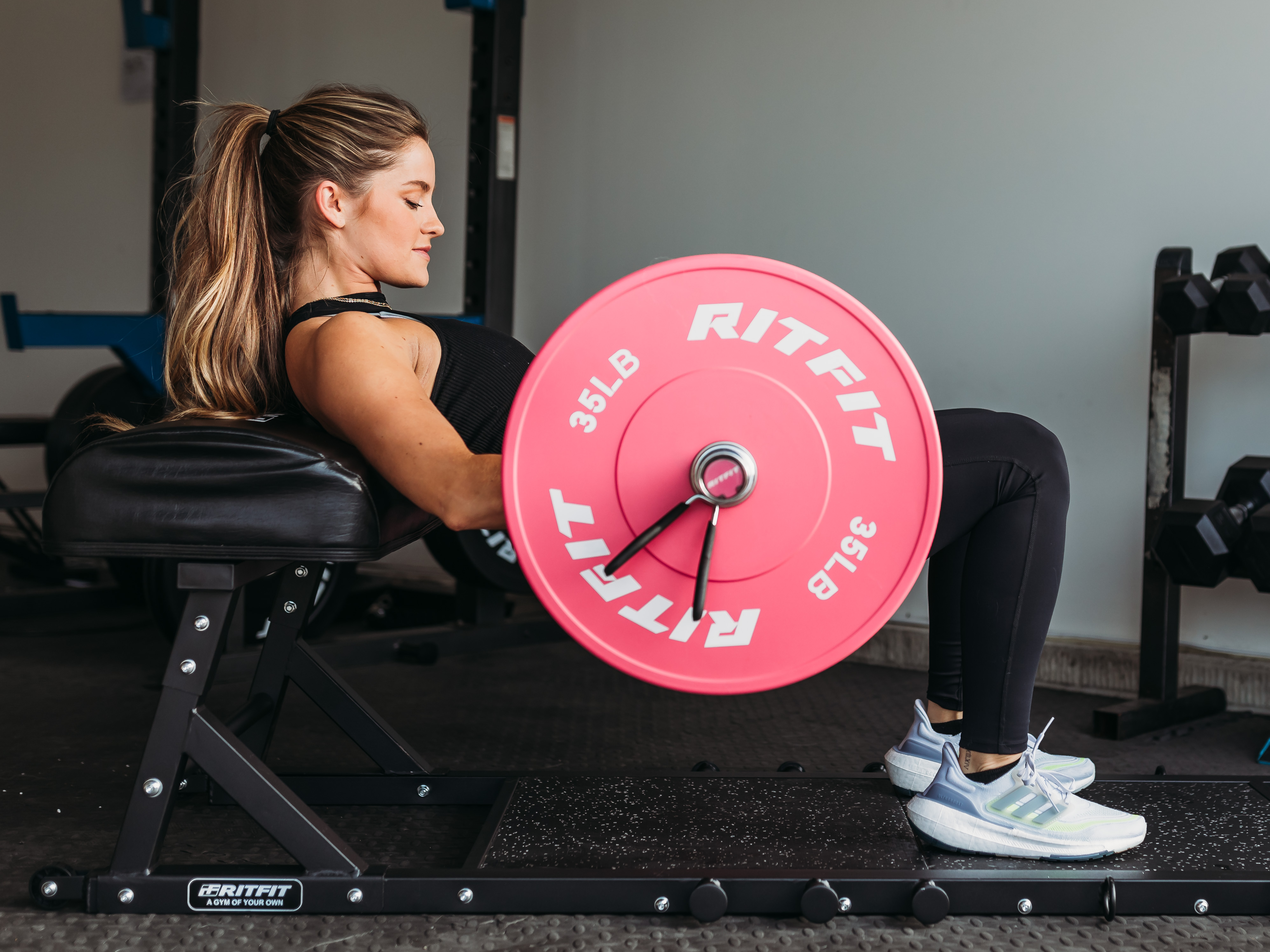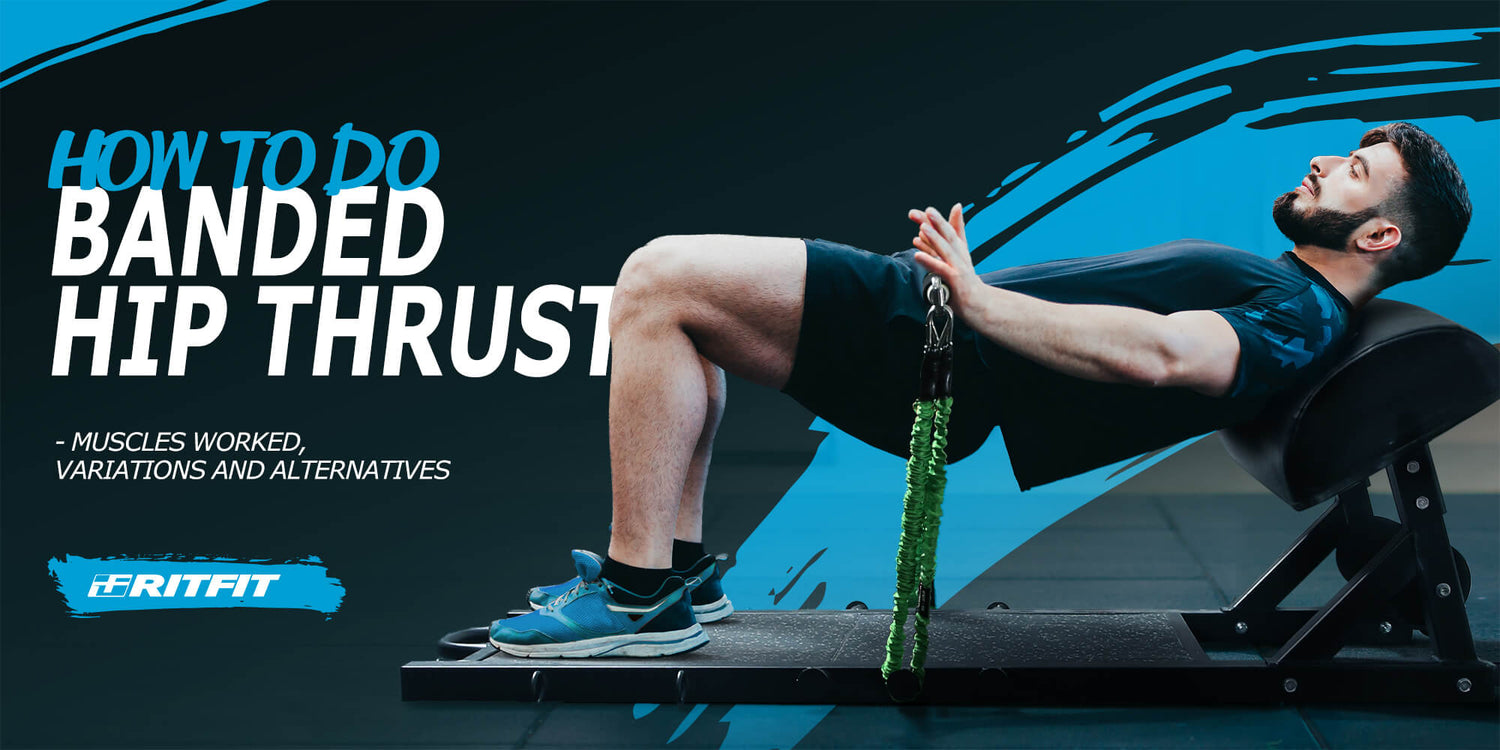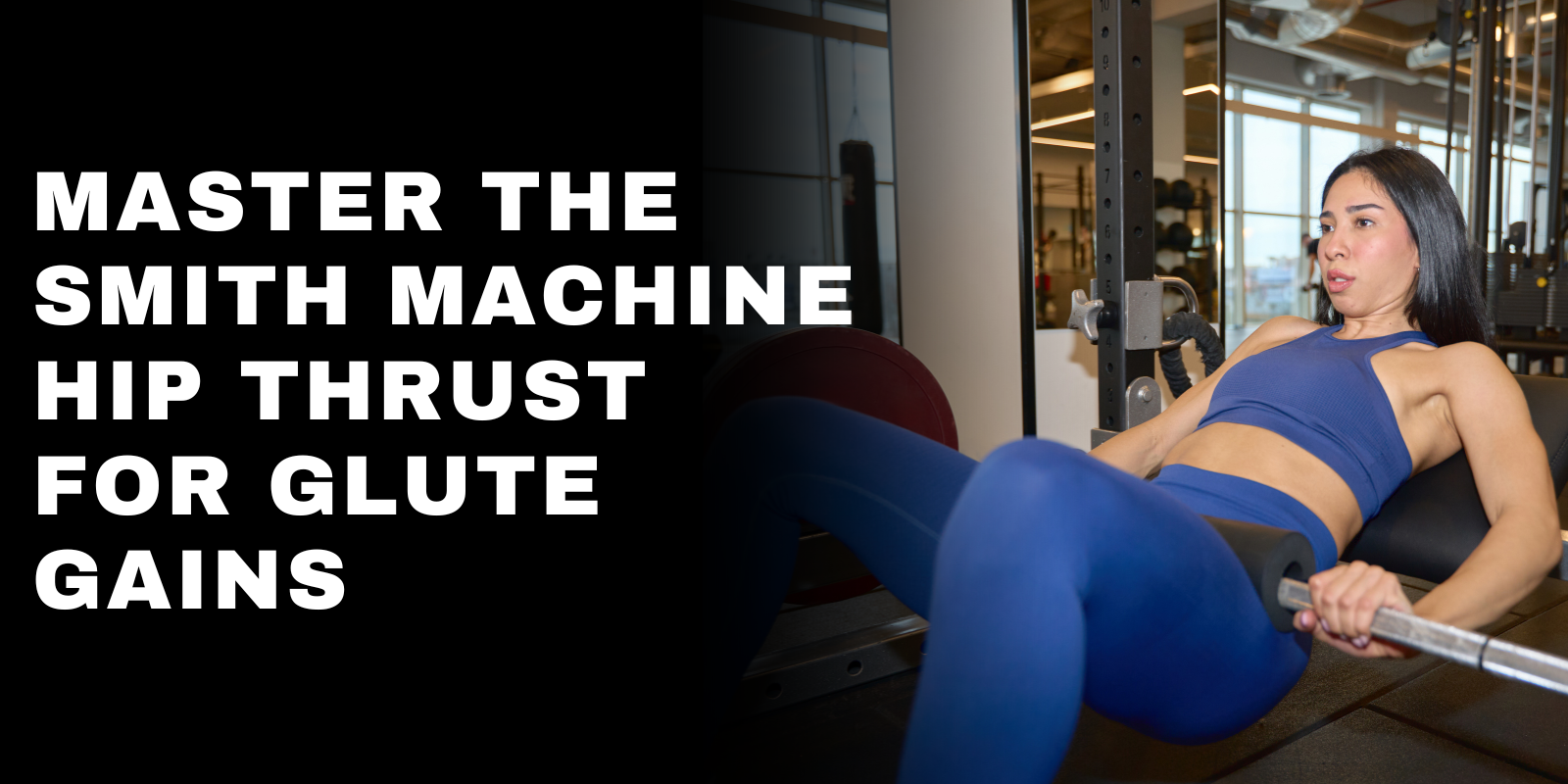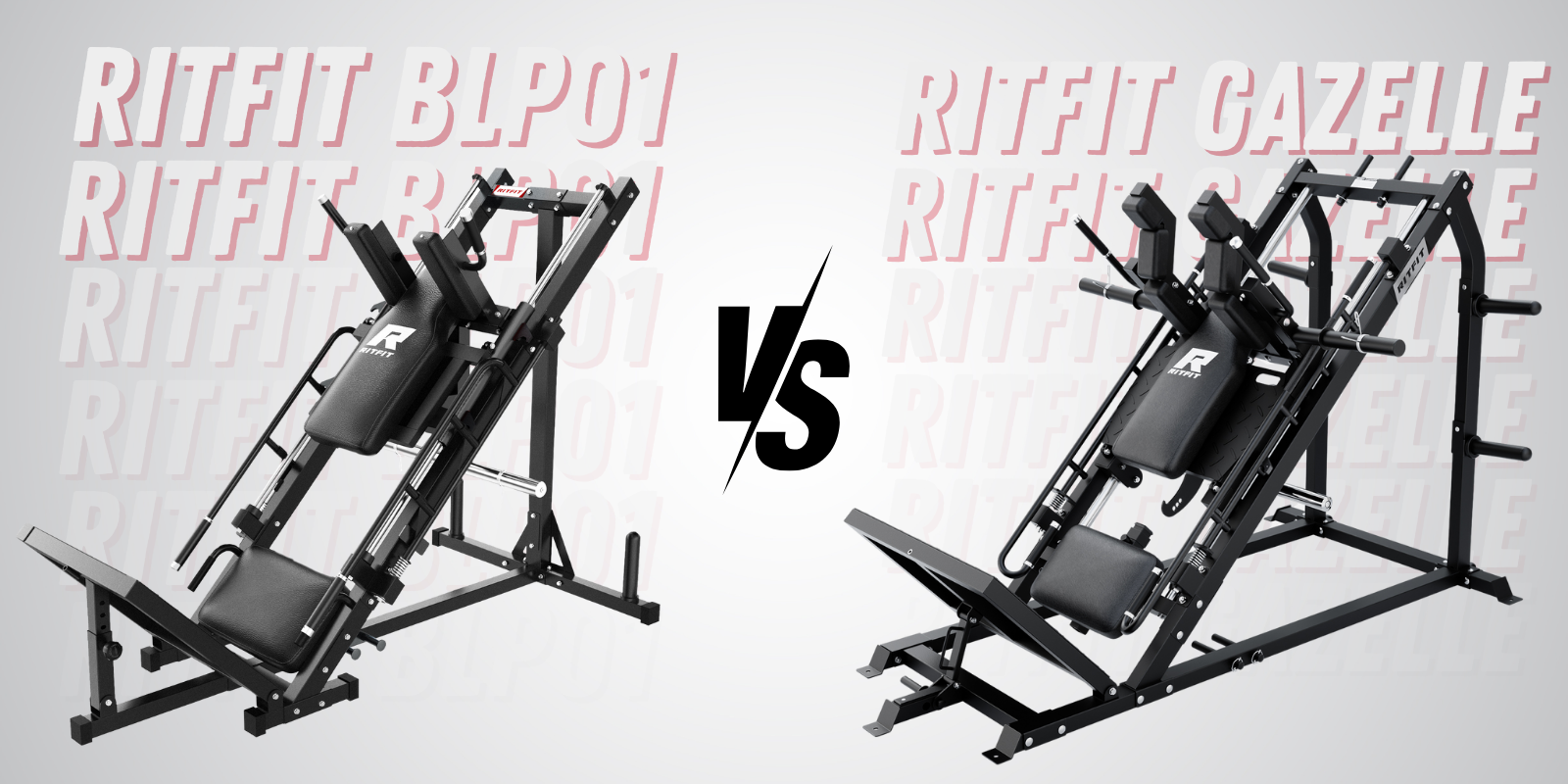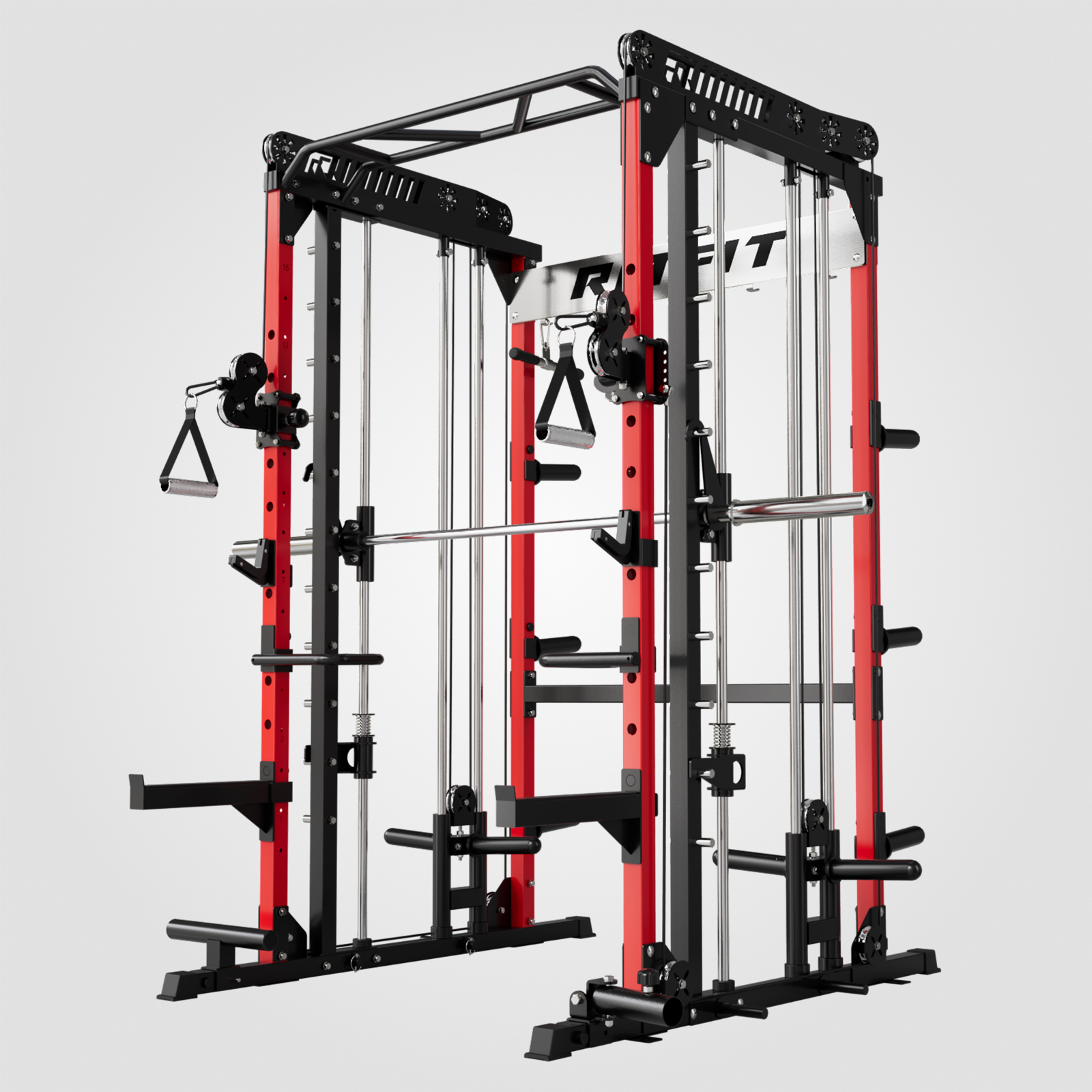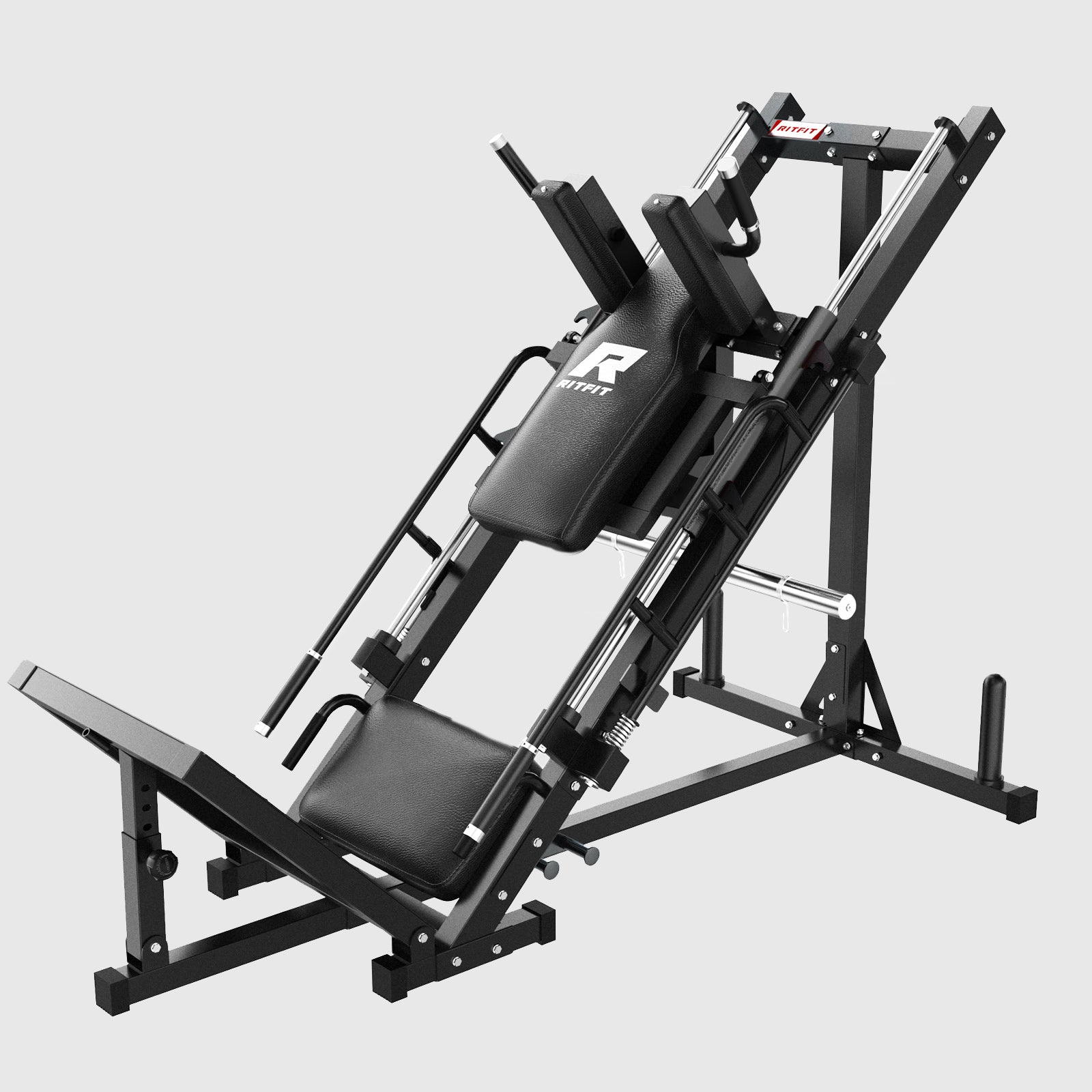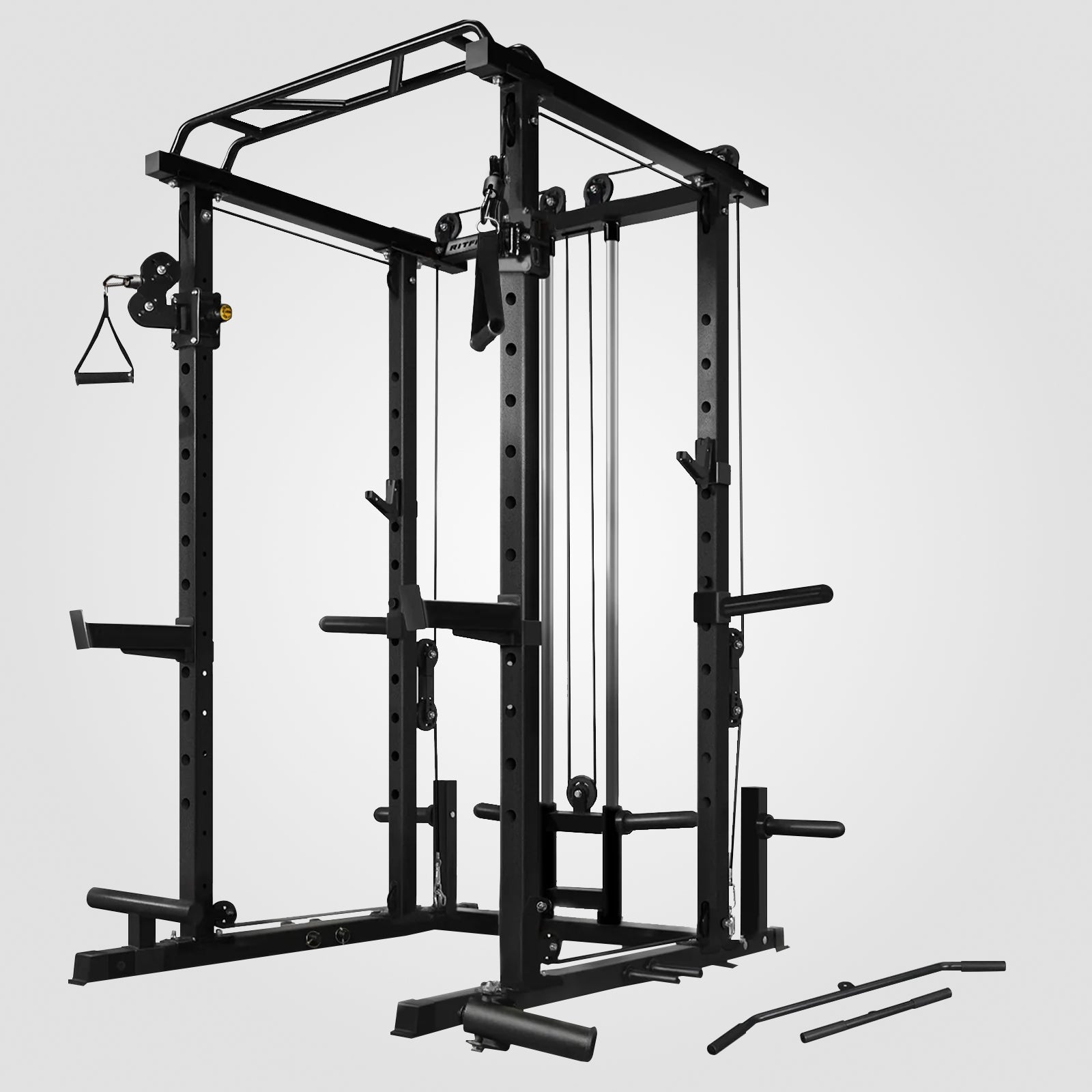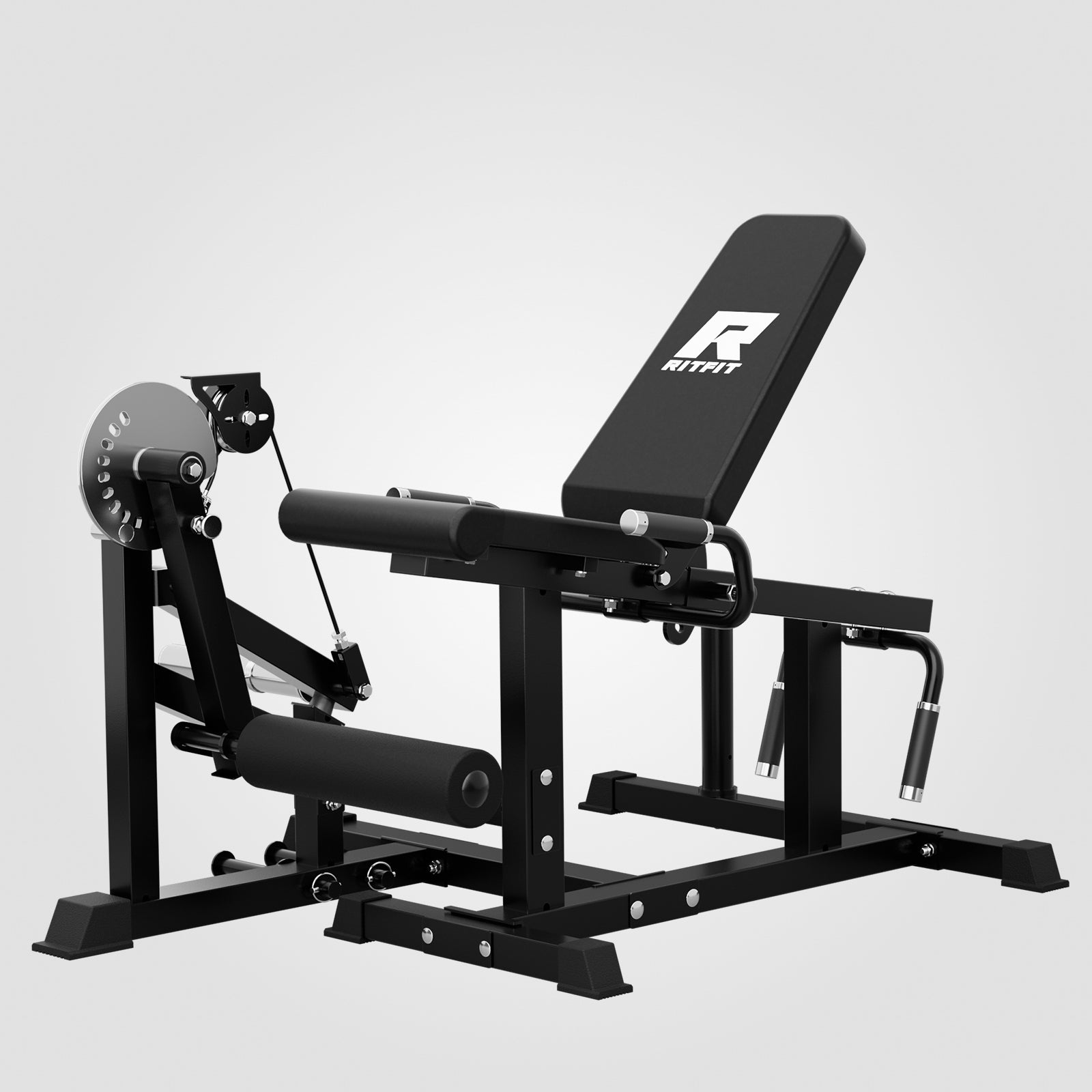The banded hip thrust is a popular exercise among fitness enthusiasts and athletes to build strength and stability in the glutes, hips, and lower back muscles. This exercise is more challenging than the traditional hip thrust. This article provides a step-by-step guide on performing the banded hip thrust, common mistakes to avoid, muscles worked, and variations and alternatives. The banded hip thrust can improve lower body strength, power, and stability with proper form and consistency.
What Is the Banded Hip Thrust?

The banded hip thrust is a variation of the traditional hip thrust exercise, performed by lying on your back and raising your hips toward the ceiling. Adding a resistance band to the exercise adds resistance and intensity to the movement, working your glutes and lower back muscles even harder. The band can be anchored to a sturdy object, such as a weight bench or squat rack, or even wrapped around your hips to provide resistance.
How to Do a Banded Hip Thrust Step-By-Step
Here's a step-by-step guide to performing a banded hip thrust:
- Set up: Place a bench or stability ball behind you and lie down with your upper back resting on the bench or ball. You should keep your feet flat on the floor, hip-width apart.
- Add resistance: Wrap a resistance band around your thighs, just above your knees.
- Brace your core: Tighten your core muscles and keep your back straight.
- Drive your hips upward: Push through your heels and use your glutes to raise your hips upward until your body forms a straight line from your knees to your shoulders.
- Hold: Pause for a second at the top of the movement, then lower your hips back down to the starting position.
- Repeat: Perform 8-12 repetitions, then repeat for three sets.
Banded Hip Thrust Common Mistakes
Below are some common mistakes people make when performing the banded hip thrust. By avoiding these common mistakes and focusing on proper form, you can get the most out of your banded hip thrusts and effectively target your glutes and hips.
1. Not Keeping the Resistance Band Taut
The resistance band should be taut throughout the exercise to provide consistent resistance and ensure the glutes work hard. So, ensure you're using a band with the right resistance level for your ability. It should provide enough resistance to challenge your glutes but not so much that it's difficult to maintain proper form.
2. Not Using Enough Resistance
Using a resistance band that is too light won't provide enough challenge to your muscles and limit the effectiveness of the exercise. So, use a band that offers enough resistance to make the exercise challenging.
3. Arching Your Lower Back
Arching your lower back during banded hip thrusts can compromise your form and increase the risk of injury. This can put unnecessary strain on your lower back muscles and reduce the effectiveness of the exercise. To avoid arching your lower back, keep your core engaged throughout the exercise. It will stabilize your lower back and prevent it from arching.
4. Not Pushing Through Your Heels
To effectively target your glutes, you need to push through your heels while using your glutes to drive the movement. If you're pushing through your toes or not using your glutes enough, you won't get the maximum benefit from the exercise.
5. Not Pausing at the Top
Pausing at the top of the movement for a second will help you feel the activation in your glutes and ensure that you're using the proper form. Skipping the pause can lead to improper form and limit the effectiveness of the exercise.
6. Overextending Your Hips
While it's essential to extend your hips fully, it's also important to avoid overextending them. This can place unnecessary stress on your lower back and reduce the effectiveness of the exercise. Instead, focus on your glutes contracting and stop when your upper body and upper thighs form a straight line.
Muscles Worked in the Banded Hip Thrust
The banded hip thrust is a resistance exercise primarily targeting the gluteal muscles, also known as the glutes. However, the banded hip thrust works other muscle groups besides the glutes. This exercise works the glutes and other important muscle groups to improve lower body strength, power, and stability.
Glutes

The glutes are the largest muscle group in the body that play a key role in walking, running, jumping, and more. During the banded hip thrust, the resistance band provides resistance as you lift your hips off the floor or bench. This resistance activates the glutes and works them to fatigue. The glutes are responsible for extending the hips, and they work to lift the hips off the floor or bench during the movement.
Core

The core muscles, including the abs and lower back muscles, stabilize the spine and keep the body in a neutral position during the exercise. During the banded hip thrust, the resistance band creates resistance as you lift your hips off the floor or bench. This resistance requires the core muscles to work hard to maintain stability, especially as the hips reach full extension. This increased activation of the core muscles improves core strength over time.
Hamstrings

The hamstrings are located on the back of the upper leg and play a crucial role in hip extension. The resistance created by the resistance band during banded hip thrust activates the glutes. While the glutes are responsible for extending the hips, the hamstrings assist the glutes and contribute to this movement. This helps to improve the strength and power of the hamstrings, leading to improved lower body performance and stability.
Quads

The banded hip thrust works the quads, or quadriceps, by involving them as stabilizing muscles during the exercise. The quads are located on the front of the upper leg and play a crucial role in maintaining balance and stability during lower body exercises, including the hip thrust.
Hip Adductors

The adductors are the inner thigh muscles. The banded hip thrust works the hip adductors by involving them in keeping the legs together during the exercise. The hip adductors play a crucial role in maintaining balance and stability, especially as the hips reach full extension. The banded hip thrust requires using the entire body, including the hip adductors, to control the movement and keep the resistance band taut. This engages and strengthens the hip adductors, improving overall lower-body stability.
Benefits of the Banded Hip Thrust
- Builds strength and stability in the hips and glutes: The banded hip thrust is a challenging exercise to build strength and stability in the hips and glutes, improving overall athletic performance.
- Improves posture: Strong glutes and hips improve posture and reduce the risk of injury.
- Can be performed anywhere: The banded hip thrust can be performed anywhere with a resistance band and a sturdy object to anchor it to, making it a convenient and accessible exercise option.
Variations of the Banded Hip Thrust
Variation #1: Elevated Banded Hip Thrust
The Elevated Banded Hip Thrust is an advanced variation of the standard Hip Thrust exercise and involves using a resistance band to increase the activation and difficulty of the exercise. Here's how to perform the Elevated Banded Hip Thrust:
- Start by sitting on the ground with your shoulders against a bench and your feet flat on the floor. Your knees should be bent, and your hands should be placed on the floor beside your hips.
- Loop a resistance band around your knees and position it so that it is taut.
- Drive your heels into the floor and use your glutes and hips to lift your torso up and off the bench until your body is straight from your knees to your shoulders.
- Pause for a moment at the top of the movement, squeezing your glutes, then slowly lowering your body down to the starting position.
- Repeat for the desired number of reps.
Variation #2: Single-Leg Banded Hip Thrust
Single-Leg Banded Hip Thrust is a strength training exercise commonly used to improve athletic performance, correct muscle imbalances, and prevent injury. It's performed with a resistance band and focuses on one leg at a time. Here's how to perform the Single-Leg Banded Hip Thrust:
- Place a resistance band around your legs, just above your knees.
- Sit on the floor with your shoulder blades resting on a bench or sturdy surface while your legs extend in front of you.
- Place your feet on the floor and bend your right knee, keeping your left leg straight.
- Drive your right heel into the ground and raise your hips upward, keeping your left leg extended.
- Pause at the top of the movement and squeeze your glutes.
- Lower your hips back to the starting position.
- Repeat for the desired number of repetitions, then switch legs.
Variation #3: Banded Kneeling Hip Thrust
Banded Kneeling Hip Thrust is a variation of the standard hip thrust exercise but with the added resistance of a band around the hips. The band provides additional resistance as you extend your hips, challenging the muscles to work harder to produce force. To perform a Banded Kneeling Hip Thrust:
- Kneel on the floor with your knees shoulder-width apart and place a bench or stability ball behind you.
- Wrap a resistance band around your hips and position yourself, so your upper back rests on the bench or ball.
- Place your hands on the ground beside you for stability.
- Drive your hips upward, squeezing your glutes at the top of the movement.
- Slowly lower your hips to the starting position, keeping tension on the band throughout the exercise.
- Repeat for the desired number of reps.
Variation #4: Standing Band Hip Thrust
The Standing Band Hip Thrust is another traditional hip thrust exercise variation. It is performed while standing, with the assistance of a resistance band, to increase the intensity of the movement. Here's how to perform the Standing Band Hip Thrust:
- Stand with your feet shoulder-width apart and wrap a resistance band around your legs just above your knees.
- Bend your knees and shift your weight onto your heels, keeping your core tight and chest lifted.
- Drive your hips forward, pushing through your heels and contracting your glutes.
- Pause at the top of the movement for a moment, then slowly lower your hips to the starting position.
- Perform the exercise for as many repetitions as desired.
Banded Hip Thrust Alternatives
Alternative #1: Glute Bridge
The Glute Bridge is a strength training exercise that primarily works the glutes or the buttocks muscles. It's also a good exercise for strengthening the lower back, hips, and core muscles. For increased resistance, the exercise can be performed with just body weight or additional weight, such as a barbell or weight plates.
You can perform this exercise lying on your back, with your knees bent and feet flat on the floor. Then, you lift your hips off the ground and extend them towards the ceiling, creating a bridge-like shape with your body.
Alternative #2: Barbell Hip Thrust
The Barbell Hip Thrust is similar to the banded hip thrust. But instead of a resistance band, you use a barbell to add resistance to the movement. You can perform it by sitting on the ground with a barbell across the hips, then driving the weight up with the hips, extending them towards the ceiling, and lowering the hips back to the ground.
This exercise can improve athletic performance by increasing hip and glute strength and enhancing power, speed, and jumping ability. It can also alleviate lower back pain and improve posture by strengthening the spine-supporting muscles.
Alternative #3: Squats
Squats are a multi-joint exercise that can target the glutes, quadriceps, and hamstrings, making them an excellent alternative to the banded hip thrust. They are a staple exercise in many strength training programs, helpful in improving overall fitness and athletic performance.
The exercise is performed by standing with feet shoulder-width apart, then lowering the body as if sitting back in a chair. Your legs should bend to at least a 90-degree angle, and the hips should go lower than the knees. Then, you push back up to the starting position, extending the legs and straightening the body.
Best Sizes of Resistance Bands for Hip Thrusts
The size of the resistance band you use for the banded hip thrust will depend on your fitness level and strength. Beginners may want to start with a lighter band, like a 0.5" width 41" loop band. However, more advanced athletes may prefer a heavier band.
The key is selecting a band that provides enough resistance to challenge your muscles without being too difficult to perform the exercise correctly.
Summary
The banded hip thrust is a challenging and effective exercise for building strength and stability in the hips, glutes, and lower back muscles. By using a resistance band, this exercise adds resistance to the traditional hip thrust, making it an excellent option for those looking to improve their athletic performance or tone and shape their glutes. With proper form, this exercise can be a great addition to any workout routine, providing numerous benefits and reducing the risk of injury.



